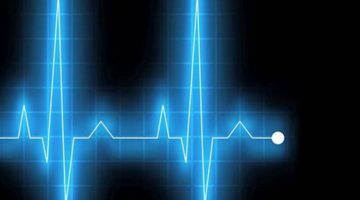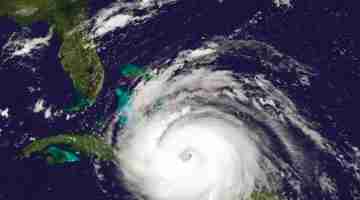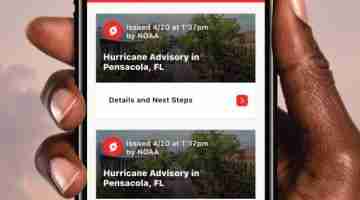PHOTO COURTESY OF WIKIMEDIA
Courtesy of Florida Power & Light (FPL)
At FPL, safety is the cornerstone of our commitment to customers and employees. FPL urges Floridians to be prepared and be aware of potential electrical hazards at all times, especially before, during and after severe weather. Below are electricity-related tips to keep you and your family safe during hurricane season.
BEFORE A STORMTHREATENS
• Determine your backup power source or make arrangements to relocate if a storm warning is issued and someone in your home is dependent on electric-powered, life-sustaining medical equipment.
• Ensure all trees and vegetation near power lines are trimmed by specially trained line-clearing professionals to minimize their potential impact on you and your neighbors.
• Make sure debris is cleared prior to a hurricane warning announcement – trash pickup will be suspended during this time. Tree limbs and branches are the leading cause of outages and can become airborne during a storm.
• DO NOT attempt to trim any vegetation growing on or near any overhead power lines. Only specially trained line-clearing professionals should work around power lines. Check FPL.com/trees to locate a contractor qualified to trim vegetation around power lines.
PREPARING FOR AN APPROACHING STORM
• Turn off and unplug any unnecessary electrical equipment.
• Turn off all swimming pool pumps and filters, and wrap them in waterproof materials
• Set your refrigerator and freezer to their coldest settings ahead of time to keep food fresh longer in the event of a power outage.
• Look up and note the location of power lines before you begin working on a ladder. Be sure that ladders or scaffolds are far enough away so that you – and the ends of the tools you’re using – don’t come within 10 feet of power lines.
• Make sure to turn off and unplug your TV before lowering a TV antenna or satellite dish and avoid power lines.
• Store your FPL bill – which includes your FPL account number – in a waterproof container, or save your account number as a note on your cellphone so we can serve you faster.
AFTER THE STORM:WHEN IS IT SAFE?
• Watch for downed power lines. Call 911 or FPL at 1-800-4OUTAGE to report fallen power lines that present a clear and imminent danger to you or others. DO NOT attempt to touch any power lines, and keep your family away from them. Always assume that every power line is energized.
• Stay away from standing water and debris, which could potentially conceal a live wire.
• DO NOT venture out in the dark because you might not see a downed power line that could be energized and dangerous.
• Turn off your circuit breakers, disconnect all electrical appliances that are still plugged in, and turn off all wall switches immediately. If your roof or windows leak, water in your walls and ceiling may come into contact with electrical wiring. Remember to never stand in water while operating switches or unplugging any electrical device.
GENERATOR SAFETY
• Read and follow all the manufacturer’s guidelines when using a generator to avoid dangerous shortcuts and ensure safe operation.
• DO NOT directly connect your generator to your home’s breaker or fuse box. Power from a generator connected to a home’s wiring will “back feed” into utility lines – which can severely injure or kill a neighbor or utility crew working to restore power.
• DO NOT run generators inside your home or garage, as they produce potentially deadly carbon monoxide fumes. • Keep generators away from all open windows, including neighbors’ windows, to prevent the fumes from entering a home or business.
• Buy a battery-operated carbon monoxide alarm, which will alert you if carbon monoxide levels become dangerous.
• Turn off all connected appliances before starting your generator.
• Turn connected appliances on one at a time, never exceeding the generator’s rated wattage.
• DO NOT touch a generator if you are wet, standing in water or on damp ground.
• NEVER refuel a hot generator or one that is running – hot engine parts or exhaust can ignite gasoline.
• Ensure you have plenty of gas safely stored in gas containers to operate your generator.
FPL’S RESTORATION PRIORITIES
During large outages, such as after hurricanes, FPL follows an overall plan that calls for restoring power to the greatest number of customers safely and as quickly as possible. After a strong storm or hurricane, our restoration process is as follows:
• FPL restores power plants and affected transmission lines and substations, which are essential to providing any electric service.
• Simultaneously, we restore power to electrical lines and equipment that serve critical facilities, such as hospitals, police and fire stations, water treatment plants and emergency broadcast centers.
• We then work to return service to the largest number of customers in the shortest amount of time – including service to the main thoroughfares that host supermarkets, pharmacies, gas stations and other needed community services.
• Lastly, we repair the infrastructure serving smaller groups and neighborhoods, converging on the hardest-hit areas until every customer is restored.
STAYING IN TOUCH WITH FPL FOLLOWING A STORM
When outages occur, we know our customers want and need information on when their power will be restored. FPL will provide updated restoration time estimates and other progress reports via mobile if a storm strikes. Customers can contact and/or get information using the following sources:
• Our website: FPL.com/storm
• Twitter: Twitter.com/insideFPL
• Facebook: Facebook.com/FPLconnect
• YouTube: YouTube.com/FPL
• FPL’s blog: FPLblog.com
• FPL’s outage page: FPL.com/Outage
• FPL’s outage number: 1-800-4OUTAGE













No Comment